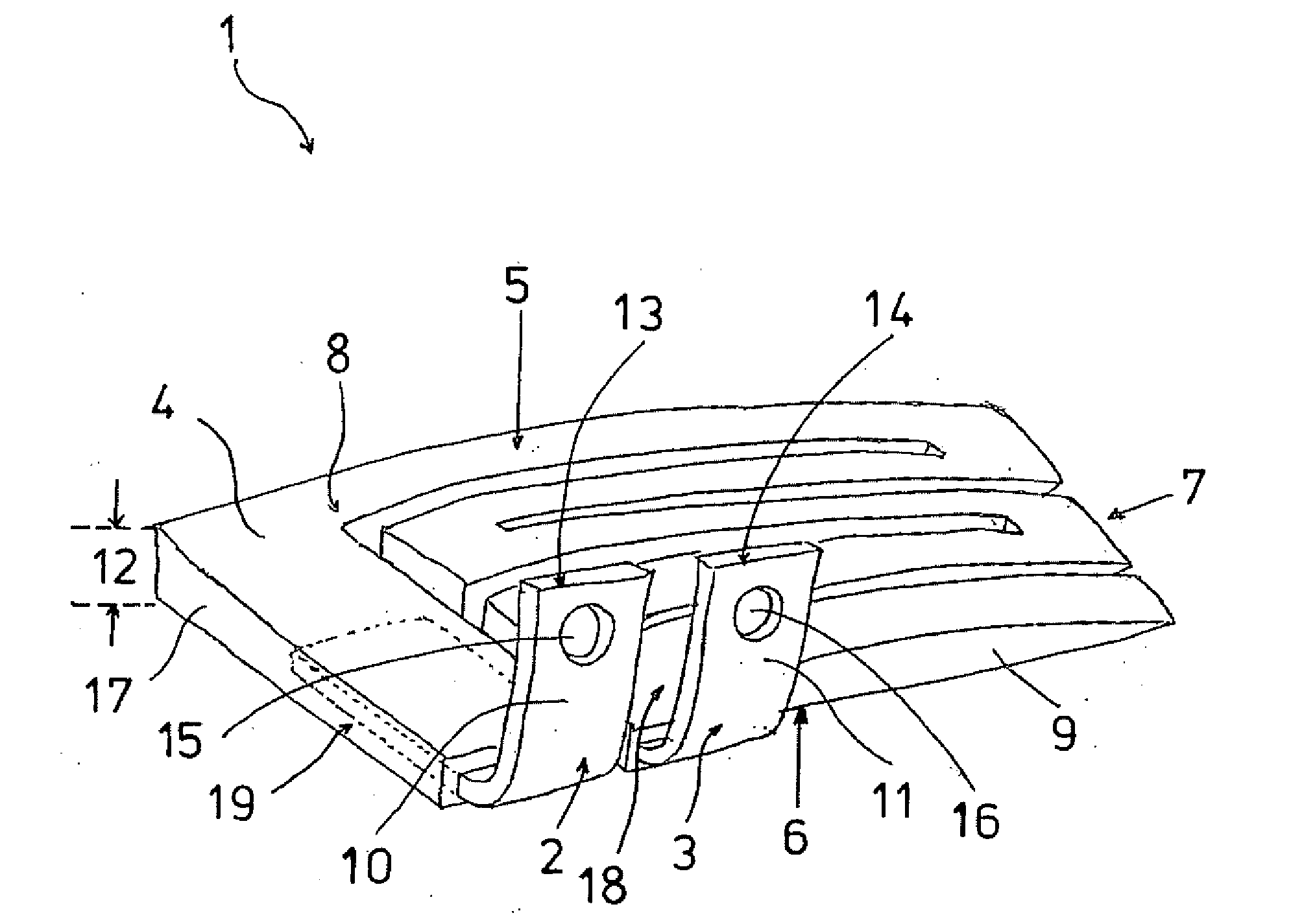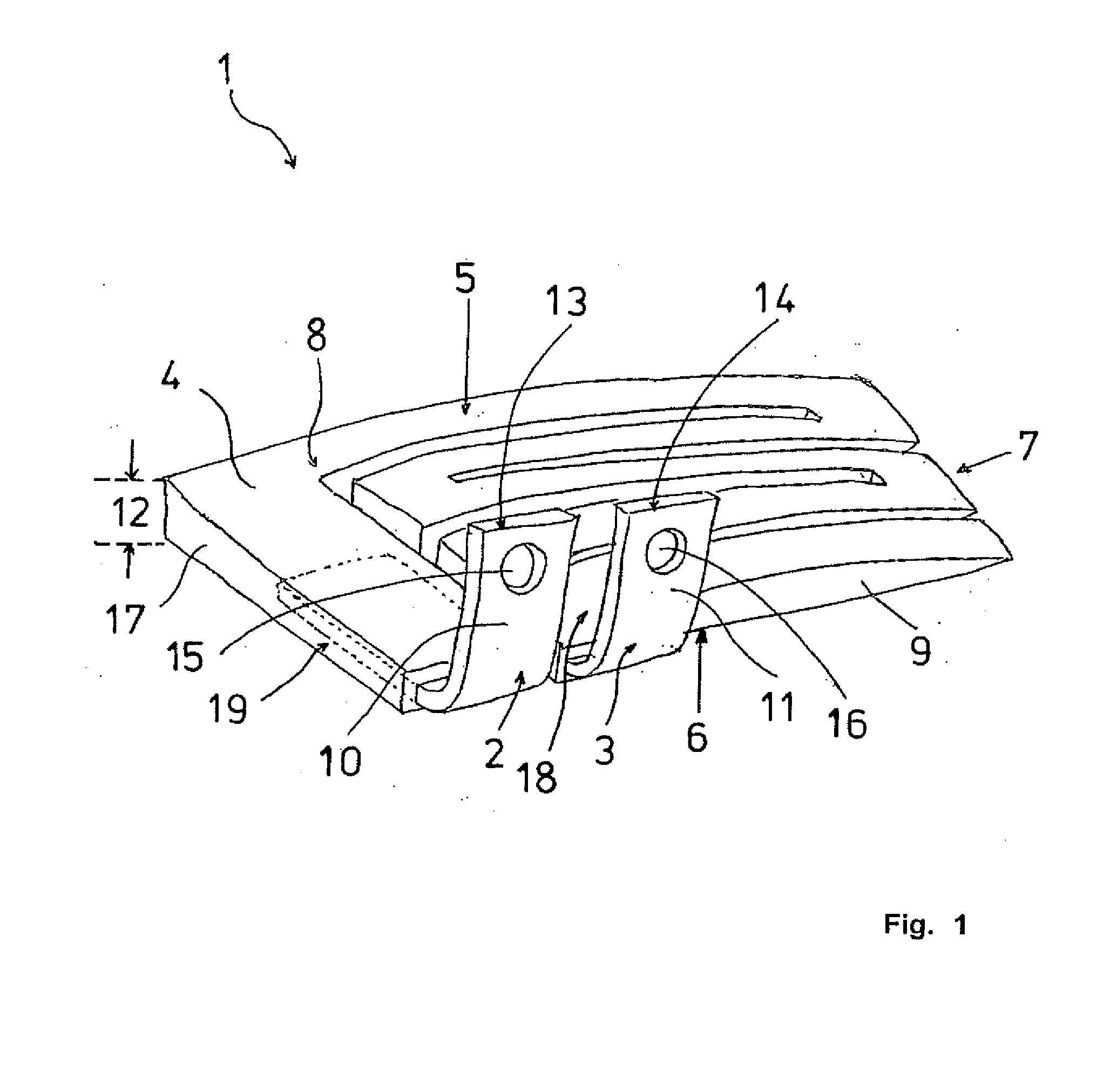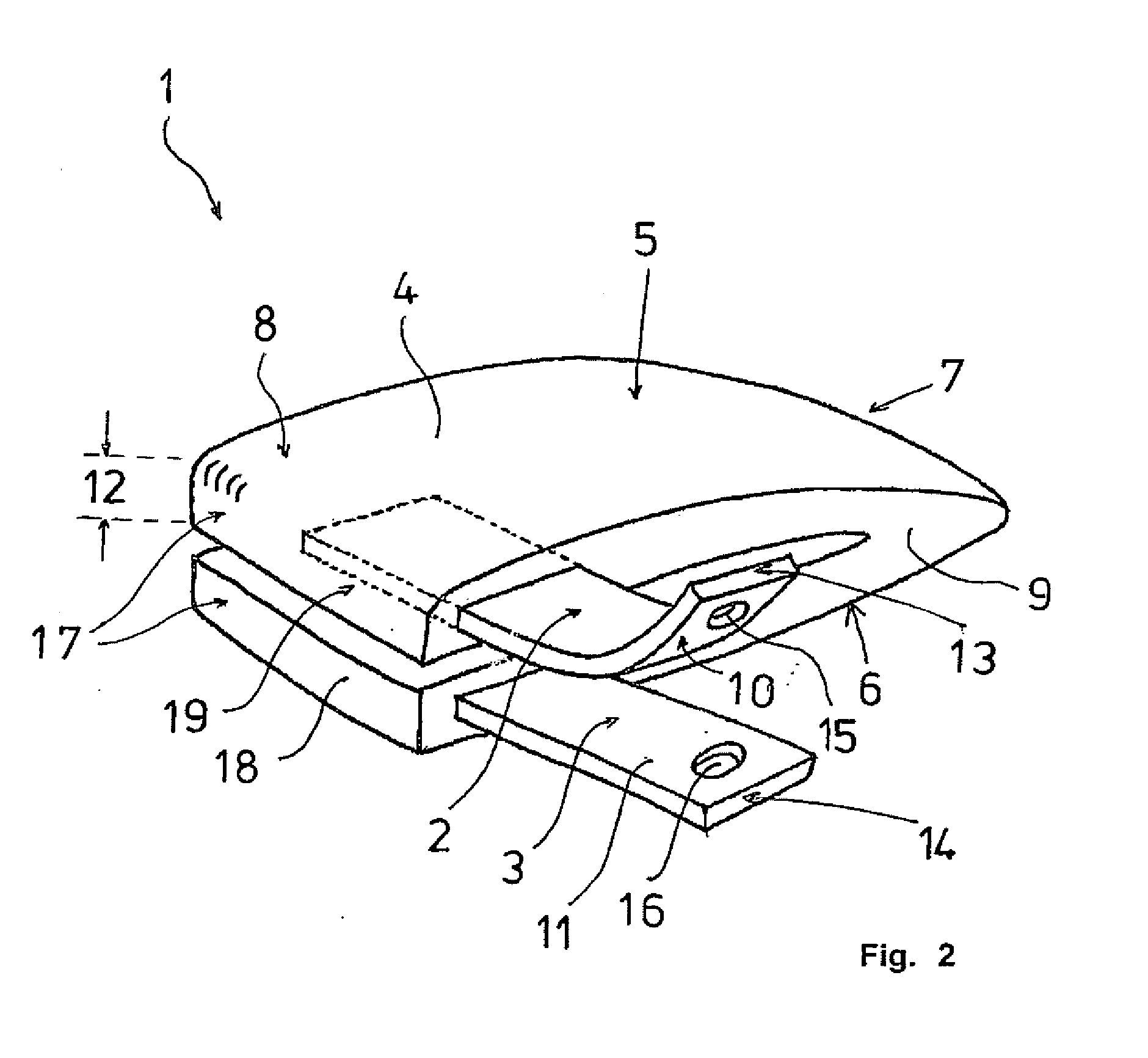Electrical heating element
a heating element and heating element technology, applied in the field of electric heating elements, can solve the problems of affecting the quality of welding seams, hot wedges and heating elements are subject to high corrosive and mechanical stresses, and need to be replaced, so as to improve corrosion resistance, improve mechanical wear resistance, and prolong the useful life
- Summary
- Abstract
- Description
- Claims
- Application Information
AI Technical Summary
Benefits of technology
Problems solved by technology
Method used
Image
Examples
Embodiment Construction
[0017]The heating elements 1 according to the invention shown in FIGS. 1 and 2 include two electrodes 2, 3 and a heating resistor 4 connected in an electrically conductive way with the electrodes 2, 3. The heating resistor 4 has a wedge-shaped contour with a top side 5 and a bottom side 6 that converge at an acute angle and end in a tip 7.
[0018]The electrodes 2, 3 are arranged in an area 8 of the heating resistor 4 that is remote from the tip 7, and extend laterally from a side surface 9 of the electrical heating element 1. They have a flat, rectangular cross-sectional shape and run in a plane perpendicular to the bottom side 6 and parallel to the side surface 9 of the heating resistor 4. The limbs 10, 11 of the electrodes 2, 3 extend beyond the top side 5 of the heating resistor 4 by a multiple of its thickness 12 and have at their upper ends 13, 14 holes 15, 16 as attachment elements for fixing the heating element 1 on a welding device that is not shown in the drawing.
[0019]The he...
PUM
| Property | Measurement | Unit |
|---|---|---|
| length | aaaaa | aaaaa |
| corrosion-resistant | aaaaa | aaaaa |
| electrically conductive | aaaaa | aaaaa |
Abstract
Description
Claims
Application Information
 Login to View More
Login to View More - R&D
- Intellectual Property
- Life Sciences
- Materials
- Tech Scout
- Unparalleled Data Quality
- Higher Quality Content
- 60% Fewer Hallucinations
Browse by: Latest US Patents, China's latest patents, Technical Efficacy Thesaurus, Application Domain, Technology Topic, Popular Technical Reports.
© 2025 PatSnap. All rights reserved.Legal|Privacy policy|Modern Slavery Act Transparency Statement|Sitemap|About US| Contact US: help@patsnap.com



